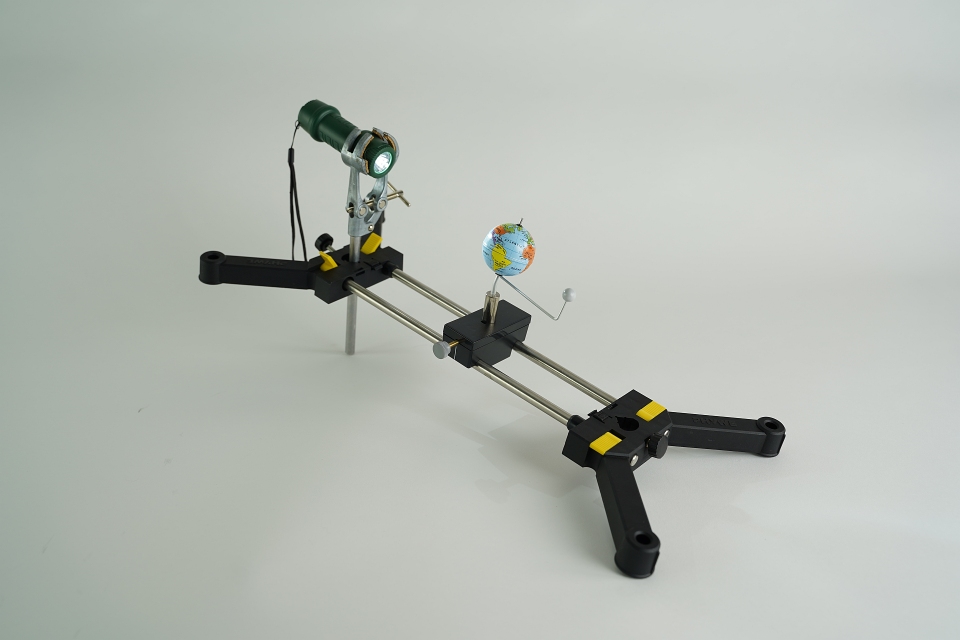Principle
Not only the earth moves in our solar system (around the sun), but also the moon. The moon rotates around the earth, whereby the moon takes different positions from the earth. The moon phases can be observed very well from the earth. The moon goes thereby from the new moon over the half moon to the full moon and again back in a scarce month. If the moon stands between earth and sun, we see the unlit side of the moon, thus it is new moon. When the earth is between the moon and the sun, we see its illuminated side, it is full moon.
Students can use the Sun-Earth-Moon model to independently understand how the phases of the Moon occur. To do this, they set different positions of the moon and then observe how the moon is perceived from Earth.


